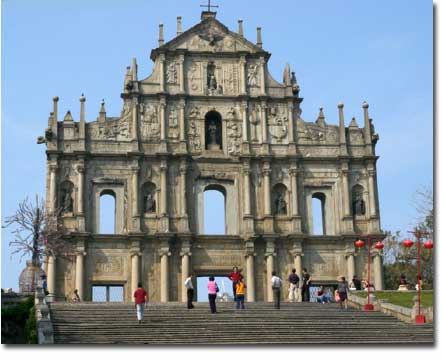
Façade of St.Paul’s, Macao, China. ©2001, James A. Clapp
Urban and social historian Lewis Mumford offered in The City in History that the early “permanent settlements” that were the precursors of cities were themselves built around burial places and religious shrines. Thus began a long and often paradoxical association between religion and cities. For a long time, cities had their own “local” deities, a tradition that remains with the practice of “adopting” patron saints and gods and goddesses as benefactors and protectors of cities, or, more prominently, in city names such as Athens, Los Angeles, and St. Petersburg.
The relationship has been a reciprocal one: religions changing cities by conquest and conversion; cities changing religion by science and secularism. Religions built and destroyed cities; cities provided the pulpits and launch sites for religions and the secular power for their imperious proclivities. Cities have made their living as religious sites, and have often been destroyed or died for the same reason.
The most salient physical reflection of this relationship is the religious building, long the most lofty and central structure of the city, and still the prime place for convocation between the city’s faithful and their gods. Below are a score of renowned religious buildings and shrines, to be matched with the cities in which they are to be found.
The quiz is no longer available at this time.
___________________________________
©2004, James A. Clapp (UrbisMedia Ltd. Pub. 1.1.2004)
